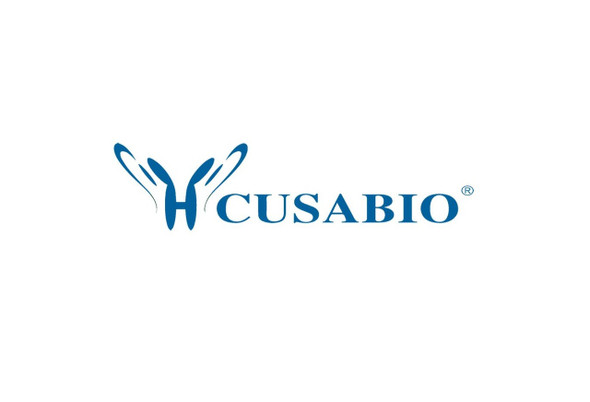Cusabio Human Recombinants
Recombinant Human UV excision repair protein RAD23 homolog A (RAD23A) | CSB-EP019259HU
- SKU:
- CSB-EP019259HU
- Availability:
- 3 - 7 Working Days
Description
Recombinant Human UV excision repair protein RAD23 homolog A (RAD23A) | CSB-EP019259HU | Cusabio
Alternative Name(s): hHR 23A; hHR23A; HR23A; MGC111083; RAD 23a; RAD23 homolog A (S. cerevisiae); RAD23 homolog A; RAD23 yeast homolog A; RAD23A; RD23A_HUMAN; UV excision repair protein RAD23; UV excision repair protein RAD23 homolog A
Gene Names: RAD23A
Research Areas: Epigenetics and Nuclear Signaling
Organism: Homo sapiens (Human)
AA Sequence: MAVTITLKTLQQQTFKIRMEPDETVKVLKEKIEAEKGRDAFPVAGQKLIYAGKILSDDVPIRDYRIDEKNFVVVMVTKTKAGQGTSAPPEASPTAAPESSTSFPPAPTSGMSHPPPAAREDKSPSEESAPTTSPESVSGSVPSSGSSGREEDAASTLVTGSEYETMLTEIMSMGYERERVVAALRASYNNPHRAVEYLLTGIPGSPEPEHGSVQESQVSEQPATEAAGENPLEFLRDQPQFQNMRQVIQQNPALLPALLQQLGQENPQLLQQISRHQEQFIQMLNEPPGELADISDVEGEVGAIGEEAPQMNYIQVTPQEKEAIERLKALGFPESLVIQAYFACEKNENLAANFLLSQNFDDE
Source: E.coli
Tag Info: N-terminal GST-tagged
Expression Region: 1-363aa
Sequence Info: Full Length
MW: 66.6 kDa
Purity: Greater than 90% as determined by SDS-PAGE.
Relevance: Multiubiquitin chain receptor involved in modulation of proteasomal degradation. Binds to 'Lys-48'-linked polyubiquitin chains in a length-dependent manner and with a lower affinity to 'Lys-63'-linked polyubiquitin chains. Proposed to be capable to bind simultaneously to the 26S proteasome and to polyubiquitinated substrates and to deliver ubiquitinated proteins to the proteasome.Involved in nucleotide excision repair and is thought to be functional equivalent for RAD23B in global genome nucleotide excision repair (GG-NER) by association with XPC. In vitro, the XPC:RAD23A dimer has NER activity. Can stabilize XPC.Involved in vpr-dependent replication of HIV-1 in non-proliferating cells and primary macrophages. Required for the association of HIV-1 vpr with the host proteasome.
Reference: Components of the ubiquitin-proteasome pathway compete for surfaces on Rad23 family proteins.Goh A.M., Walters K.J., Elsasser S., Verma R., Deshaies R.J., Finley D., Howley P.M.BMC Biochem. 9:4-4(2008)
Storage: The shelf life is related to many factors, storage state, buffer ingredients, storage temperature and the stability of the protein itself. Generally, the shelf life of liquid form is 6 months at -20?/-80?. The shelf life of lyophilized form is 12 months at -20?/-80?.
Notes: Repeated freezing and thawing is not recommended. Store working aliquots at 4? for up to one week.
Function: Multiubiquitin chain receptor involved in modulation of proteasomal degradation. Binds to 'Lys-48'-linked polyubiquitin chains in a length-dependent manner and with a lower affinity to 'Lys-63'-linked polyubiquitin chains. Proposed to be capable to bind simultaneously to the 26S proteasome and to polyubiquitinated substrates and to deliver ubiquitinated proteins to the proteasome.; FUNCTION
Involvement in disease:
Subcellular Location: Nucleus
Protein Families: RAD23 family
Tissue Specificity:
Paythway: Proteinprocessinginendoplasmicreticulum
Form: Liquid or Lyophilized powder
Buffer: If the delivery form is liquid, the default storage buffer is Tris/PBS-based buffer, 5%-50% glycerol. If the delivery form is lyophilized powder, the buffer before lyophilization is Tris/PBS-based buffer, 6% Trehalose, pH 8.0.
Reconstitution: We recommend that this vial be briefly centrifuged prior to opening to bring the contents to the bottom. Please reconstitute protein in deionized sterile water to a concentration of 0.1-1.0 mg/mL.We recommend to add 5-50% of glycerol (final concentration) and aliquot for long-term storage at -20?/-80?. Our default final concentration of glycerol is 50%. Customers could use it as reference.
Uniprot ID: P54725
HGNC Database Link: HGNC
UniGene Database Link: UniGene
KEGG Database Link: KEGG
STRING Database Link: STRING
OMIM Database Link: OMIM









